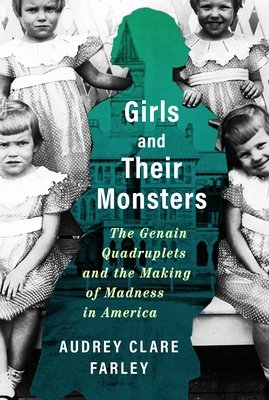
Book Review of Girls and Their Monsters: The Genain Quadruplets and th…
Unpacking Generations of Trauma in Girls and Their Monsters
Audrey Clare Farley’s Girls and Their Monsters: The Genain Quadruplets and the Making of Madness in America caught my attention not just for its evocative title, but also for its exploration of themes I often grapple with: the intersection of societal expectations, mental health, and individual identity. The tragic saga of the Morlok sisters—Edna, Sarah, Wilma, and Helen—serves as a haunting reminder of how external perceptions can shape, or in this case, warp our realities. This book is part historical narrative, part psychological investigation, and I found it impossible to look away.
Farley intricately weaves the lives of the Genain quadruplets into the larger social fabric of 1930s America. Born to a working-class couple and thrust into the limelight as “wonders” to be consumed by the public, these girls were at the center of fascination even before they could grasp its implications. The author draws on a rich tapestry of sources—newspaper articles, medical records, and personal interviews—making the reading experience as immersive as it is enlightening. Yet, what stands out is the chilling contrast between their public personas, carefully fabricated to fit a mold of innocence, and the horrific realities they endured at home.
Witnessing their plight as they navigate a world of both admiration and exploitation left me feeling a profound sadness. The account of their abusive father and the silent complicity of their mother is heart-wrenching, forcing us to confront our own societal failures. Just how many voices were drowned out by the noise of entertainment and spectacle? Farley’s exploration serves as a powerful critique of how society often demands performance, turning a blind eye to the suffering lurking beneath the surface.
Though I did find the writing occasionally dense, particularly in its later portions, the weight of the content more than compensates. Farley’s dry tone contrasts sharply with the emotional turmoil of the sisters’ experiences, creating a fascinating but unsettling dichotomy. What resonated with me was her examination of the interplay between genetics and environment in the development of mental health issues. Reading about the National Institute of Mental Health’s efforts to study the sisters, I couldn’t help but reflect on how often science can be swayed by cultural narratives—how far removed we can be from the individuals at the center of our inquiries.
One of the passages that struck me spoke directly to this notion: “It is easier to blame the broken in spirit than to confront our own failings.” It’s a poignant reminder of our shared humanity and the necessity of vigilance in the face of systemic injustice.
As I closed the book, I felt a sense of urgency to share this narrative with others. Girls and Their Monsters is more than just a historical account; it is a call to reflect deeply on how we perceive and treat those who are different or vulnerable. I believe readers interested in social justice, mental health advocacy, or simply compelling human stories will find profound value within these pages.
In summary, my connection to this book transcends mere curiosity; it has reshaped my understanding of the complexities surrounding mental health and societal expectations. It’s an experience worth having—one that may linger with you long after you turn the final page.
Discover more about Girls and Their Monsters: The Genain Quadruplets and th… on GoodReads >>






